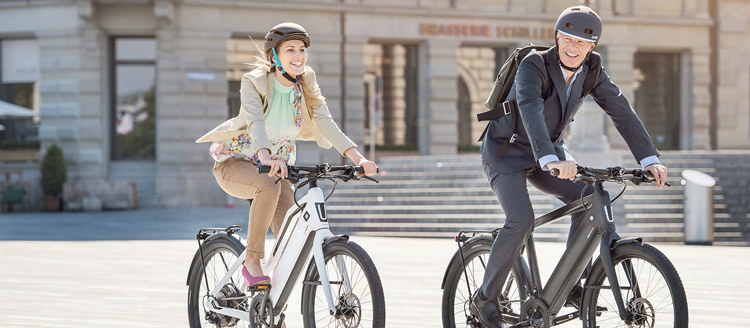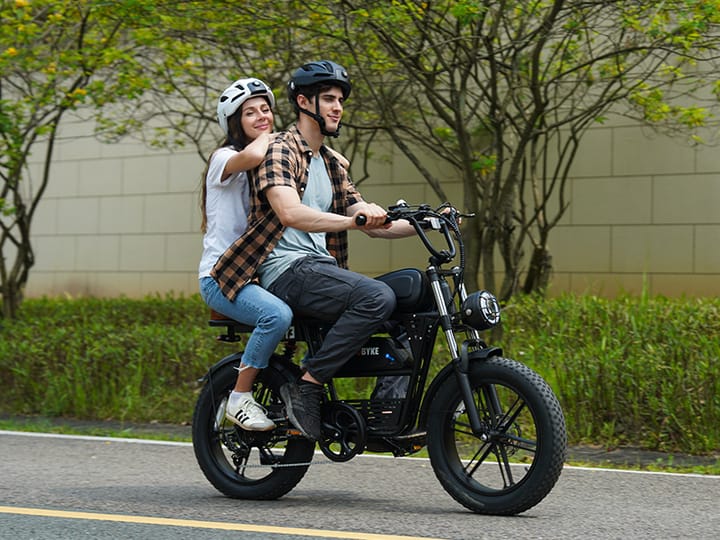Why E-Bikes Are the Future of Commuting

Not too long ago, riding a bike to work was considered the fringe choice, reserved for the fitness-obsessed, the eco-purists, or those who couldn’t afford a car.
Fast forward to today, and the streets of major cities are buzzing with a new kind of commuter: the e-biker.

This shift isn’t just about a trendy gadget; it’s about a cultural transformation in how we move through our daily lives.
E-bikes are exploding in popularity, and for good reason.
Thanks for reading! Subscribe for free to receive new posts and support my work.
The Numbers Don’t Lie
- Global sales of e-bikes surpassed 40 million units in 2023, and the market is projected to keep growing at over 10% annually well into the next decade.
- In the U.S., e-bike sales have outpaced electric car sales every year since 2021.
- Some cities report that 20–30% of rush-hour bike traffic is now electric-assisted.
These aren’t just hobbyist purchases.
Families are using cargo e-bikes instead of second cars, urban professionals are ditching gridlocked commutes, and retirees are rediscovering cycling thanks to the extra boost.
Why the Boom?
1. They Flatten Cities
That hill you dreaded on a regular bike? Gone.
Headwinds that make you want to quit? Neutralized.
E-bikes remove the intimidation factor of biking, opening up cycling to a far wider audience.
2. Speed Without Sweat
Most e-bikes cruise comfortably at 20–28 mph.
That means a ten-mile commute can take less than 30 minutes—without showing up drenched in sweat.
It’s the sweet spot between cycling and driving.
3. Affordable Compared to Cars
The average e-bike costs $1,500–$3,000.
Compare that to the $10,000+ yearly cost of owning a car in North America.
Add in rising gas prices and insurance, and the economics are compelling.
4. Health Without Overexertion
Studies show that e-bike riders get nearly as much exercise as traditional cyclists—because they ride more often and for longer distances.
It’s a workout disguised as convenience.
5. Eco-Friendly and Efficient
E-bikes consume about 1/50th of the energy of a car per mile.
They’re the most energy-efficient motorized transport available, period.
Anecdotes from the Road
I’ve spoken with riders who say their e-bike completely changed how they see their city.
One friend traded his 45-minute drive for a 25-minute e-bike commute and now says he actually looks forward to “going to work.”
Another swapped out her minivan for a cargo e-bike and hauls two kids to school every morning—no traffic, no parking stress, no gas bills.
Even rural areas are catching on.
Farmers use e-bikes to cover ground quickly. Retirees in small towns use them to stay mobile without relying on cars.
The “bike lanes” of the future might not just be in cities.
My Perspective
When we talk about the future of commuting, the conversation often defaults to autonomous cars or sprawling public transit projects.
But the real revolution is happening quietly on two wheels.
E-bikes are not a luxury or a fad—they’re a practical solution to congestion, climate change, and rising living costs.
They scale fast because they don’t need government mega projects or billion-dollar infrastructure.
All they need is a safe lane and a battery charge.
If the 20th century belonged to the car, the 21st might belong to the e-bike.
Closing Thought
The future of commuting isn’t about getting everyone into Teslas, it’s about giving people freedom of movement that’s fast, affordable, and sustainable.
That’s why e-bikes are more than just a trend. They’re the future.
Thanks for reading! Subscribe for free to receive new posts and support my work.



Comments ()